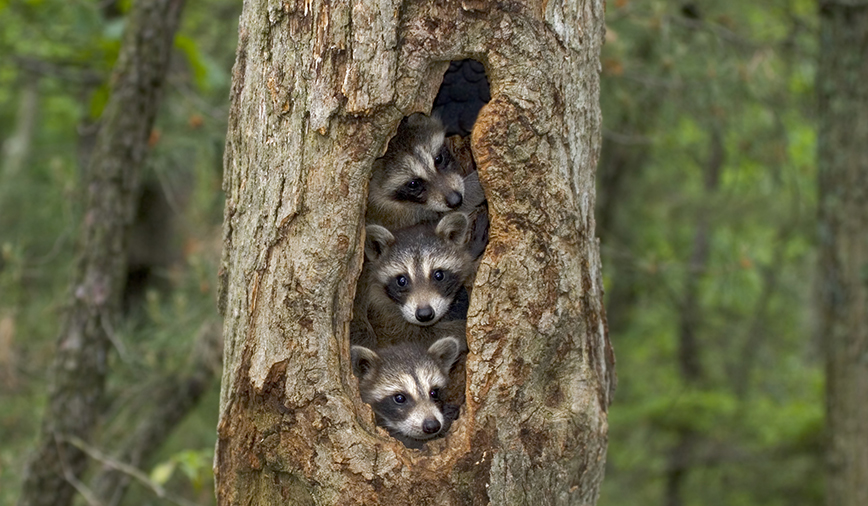Pam’s Perspective
Pam Otto is the Manager of Nature Programs and Interpretive Services for the St. Charles Park District
Generally speaking, we humans have little use for snags. When our sweaters get snagged, we grimace. When our plans hit a snag, we grumble. And if our boat strikes a snag in the water, we’re sunk.
But in the fields of forestry and wildlife management, the term snag means “dead tree.” And while that still may seem of little value to us, as humans, to local wildlife a snag can be a lifesaver. Snags are sources of food, in the form of insects and other crawling creatures, and shelter, in the form of loose bark and cavities or holes. For our wild neighbors lucky enough to find and claim one, a snag is like a Lotto check made out in their name. All their needs are taken care of, from here to eternity (or until the tree topples, whichever comes first).
One great snag that comes to mind is located in the northeast portion of the park district’s Delnor Woods Park, on Route 25 in St. Charles. Dubbed the “Raccoon Tree” by many of our instructors and program participants, this giant red oak stood for well over a hundred years as a living member of the woodland community. One day, though, disease and/or injury took its toll and the big tree died.
It was on that day that the tree began to fulfill a new purpose, one that continues even more so now. Because instead of being cut down and turned into firewood, this magnificent oak was allowed to remain standing. Insects and fungi moved in; they created tunnels in the wood and loosened the bark. Woodpeckers came next, picking away at the bugs and excavating cavities they would use to raise their families, before vacating and freeing up the space for some other cavity-dwelling species.
Finally, some of the tree’s limbs started to break off. The holes they left might as well have welcome mats pinned on them, for all the wildlife they host. Squirrels and screech owls value the smaller spaces, while larger cavities are home to critters like raccoons— hence the tree’s name.
On a recent visit to Delnor Woods, I stopped by the Raccoon Tree to see if any of its tenants were home. Sure enough, with only a moderate amount of rustling, plus some clapping, waving and whistling (all proven ways of waking the raccoons while simultaneously warding off fellow humans) a young raccoon raised its head up and peered out of the hole. He watched the spectacle before him for a minute or two (no doubt thinking the raccoon equivalent of “there goes the neighborhood”) before lowering back into the hole to finish his nap.
I can’t tell you how refreshing it is to see a raccoon where it’s supposed to be, hanging out in a tree cavity, instead of peeking out from a hole in an eave, attic or shed. And, even though I’m sure the Delnor Woods raccoons eat their share of pizza and birthday cake from the park’s picnic pavilion, I’d wager that they also feast on nuts and berries, just like “wild” raccoons do.
Even better, every raccoon that lives in a tree is one less raccoon stirring up trouble in a house or other man-made structure. Ditto for woodpeckers, bats and myriad other creatures that live in snags.
Granted, dead trees can give rise to safety concerns. If the snag is located near a house or over a path or sidewalk, it should come down, or at least be trimmed back so falling limbs won’t pose a hazard.
My friend Valerie has some great examples of truncated trunks in her yard. She says, sure, the tree crews thought she was nuts for leaving 15-ft.-tall “stumps.” But they’re stumps that teem with life, providing habitat for wildlife as well as entertainment for guests. She wouldn’t trade them for ground-up stumps for all the wood chips in the world.
So if your plans to own property thick with lush, living trees hit a snag, and one or two die, don’t despair. Be thankful for your snags—you know the animals are.
Pam Otto is the manager of nature programs and interpretive services for the St. Charles Park District. She can be reached at potto@stcparks.org or 630-513-4346.

